The North Thames Gas Board and the South Eastern Gas Board
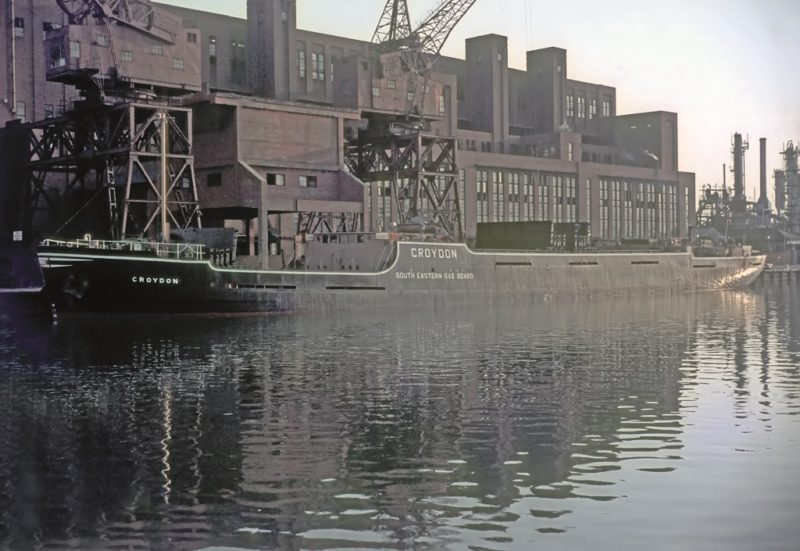
I have always had a deep knowledge of the immensity of the coal trade carried on from the Tyne and North East Coast ports to London and South Coast ports. My father was the Manager of Whitehill Point Staiths at North Shields from its opening on 22nd November 1954 to its closure at the end of 1974. One million tonnes of coal was sent away each year, usually to the Thames or the South Coast, but some was exported in larger tramps, and the conversation at the dinner table was always how many trimmers and teemers he had engaged that day for the day shift and for the night shift. This was usually six to a dozen of each depending on whether the ships being loaded were self-trimmers, easy trimmers or needed full trimming.
The word ‘teem’ is derived from an old Norse word meaning to pour down e.g. as in teeming rain, and the teemer directed the flow of coal from the flexible end of the spout with the aid of a rope, and the trimmers were equipped with large shovels to push the coal into the extremities of the hold. Loading coal at staiths is always a very dirty operation with clouds of coal dust generated on dry days, as well as the rumble and ‘screech’ of coal wagons and the heavy clattering noise of the operation of their modern ‘tippling’ machinery for steel wagons. The old wooden coal wagons had a trap door cut into their bottoms, which a nimble worker had to quickly unfasten as the wagon came to rest over the hole leading to the chute.
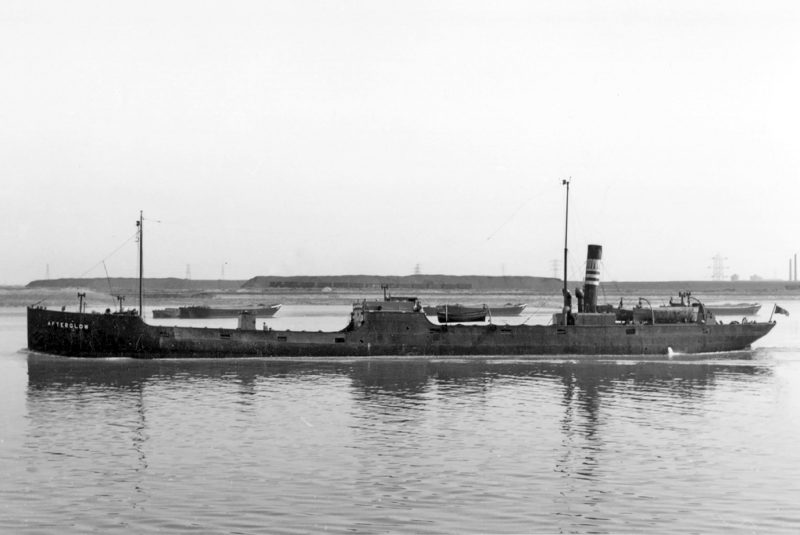
I was born in a house in South Shields in 1945 paid for by my maternal great grandfather, Capt. Henry Edwin Norman, William Cory Collier Commodore from 1910 to 1927, when he retired after his last command, Corbrook of 1910, was sold to Polish owners. He was born in 1863 as a Londoner within the Bow Belles area, his father was an Army farrier, who died after a kick from a horse, and thus young Henry served 42 years at sea on a worldwide seafaring career after his apprenticeship on windjammers. He had joined the collier Stelling in 1886 and then John McIntyre in 1890, and served in a long succession of colliers and was in command of the colliers Walker, Merthyr, Hawthorn and Hornsea, as well as Northumbria, Devereux and Ocean for Cory. He was in command of the latter ship when she was torpedoed in 1917 off Hartlepool. He always slept with the door to his cabin open, but the force of the explosion slammed the steel door firmly shut, and he had a narrow escape from being trapped, suffering shoulder and internal injuries in trying to force the door open. After convalescence at his home in Westoe Road, South Shields, he resumed as Cory Commodore at the end of the war. He died in 1936 aged 73 years and had received bravery and war medals for his war-time service.
Six hundred years of sending coal to London saw coal imports into London from U.K. ports at 458,000 tons per year in 1702/04, rising to 990,000 tons per year in 1732, and to several million tons per year in the 1850s. The sailing ship could only make eight voyages per year, whereas the pioneer steam collier John Bowes of 1851, built by Charles Palmer of Jarrow, could make a return voyage in under five days and carry more coal in a month than a trio of sailing brigs. She carried only 108 tons of water ballast on the return voyage in the fore peak and double bottom, whereas sailing ships carried much larger amounts of solid ballast in the bottom of the ship. This created the common feature of ‘ballast hills’ in North East Coast ports when it was discharged before the next coal cargo was loaded.
These staggering coal shipment totals culminated in the biggest annual export of coal from the Tyne of 22.5 million tons of coal in 1923, most of it to the big gas works and electricity power stations on the Thames. Beckton Gas Works was the biggest of its kind in the world, and at the time of nationalisation of the gas industry in 1948, supplied 119.12 million cubic feet of gas per day, to keep London warm in winter. Beckton continued in service until 1976 when North Sea gas had during the decade from 1965 supplied enough ‘clean’ gas to render the old gas works obsolete. The latter had also included the gas works of Bow Common, Brentford, Bromley, Fulham, Harrow and Stanmore, Kensal Green, Nine Elms, Shoreditch, Southall, Southend, Staines, and Stratford in the East End of London.

GAS, LIGHT & COKE COMPANY
The company was founded by Frederick Albert Winsor and incorporated by Royal Charter on 30th April 1812 under the seal of H.M. King George III. It was the first company to be set up to supply London with coal gas, and operated the first gas works in the U.K. and also the first public gas works in the world. The original working capital was £1 million in 80,000 shares, and the Board of Directors met for the first time on 24th June 1812. Samuel Clegg was the Chief Engineer of the company during the first years, and he was later commemorated by a flat-iron collier with his name in 1950, built for the North Thames Gas Board, the nationalised successor to the Gas, Light & Coke Company (GLCC). The first facilities owned by the company were a wharf at Cannon Road to unload coal, and coal gas production plants at Brick Lane, Westminster and the Royal Mint.
Some 290 miles of gas pipes had been laid by 1819, mostly in North London, and then a long process of buying out a total of over forty gas companies was carried out, the last gas works being purchased in 1932. The company purchased its coal from coal factors, coal merchants and from the Coal Exchange from 1826. Several hundred chartered collier brigs and snows were used to bring the coal from the North East of England, South Wales and the Firth of Forth to the Thames. Three only were owned, the brigs Laurel, Magnet and Dispatch, with the remainder chartered from big colliery, sailing ship, and steam collier owners e.g:-
Marquis of Londonderry, with a huge mansion at Wynyard Hall in South Durham built on the wealth of coal, as well as Seaham Hall at Seaham Harbour, with the harbour owned by the Marquis, as well as many large pits e.g. Vane Tempest exporting coal from Seaham Harbour. The third Marquis, Charles William Stewart, married Frances Anne Vane-Tempest, Countess of Antrim, in 1819, whose family had an extensive number of collieries all over Durham, at Sunderland, Seaham, Murton, Durham, Rainton, Belmont, Pittington and Broomside. The Marquis of Londonderry broke up the coal monopoly of the coal factors during his lifetime, and also owned a fleet of over two dozen steam colliers, extensive shareholdings in railway companies and banks amounting to 5.012 million shares in the latter. Wynyard Hall was built between 1822 and 1828 as the finest 19th century mansion in all of County Durham. It is a version of the ‘Waterloo Palace’ design with Corinthian columns two deep on the north aspect, and the south aspect faces a huge lake. The extensive grounds include big Victorian walled gardens, the Wellington Obelisk to commemorate the Duke of Wellington’s visit, Greek and Roman Doric temples, and classical, elegant wrought iron gates made in 1748 that were brought across from the Cathedral of Ratisbon in Bavaria by Lady Frances Anne. Sir Henry Vane-Tempest inherited the Wynyard estate in 1792, with the stables built for his many racehorses that were winners on the racing area of Sutton Bank and the Hambleton Hills. His most famous racehorse was Hambletonian, which won all of its races between 1794 and 1818 and died on 28th March 1818, and whose resting place at Wynyard is marked by a sculpture by Emma Stothard. The famous horse painter George Stubbs painted Hambletonian twice. Wynyard today is a luxury hotel and wedding and conference centre.
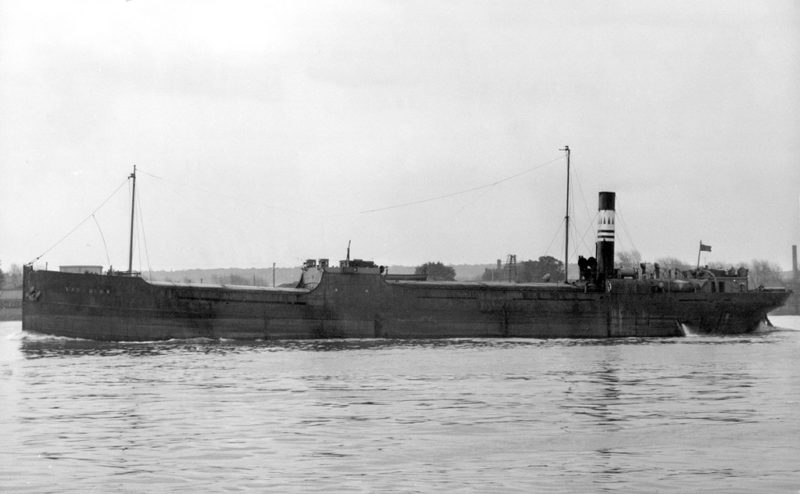
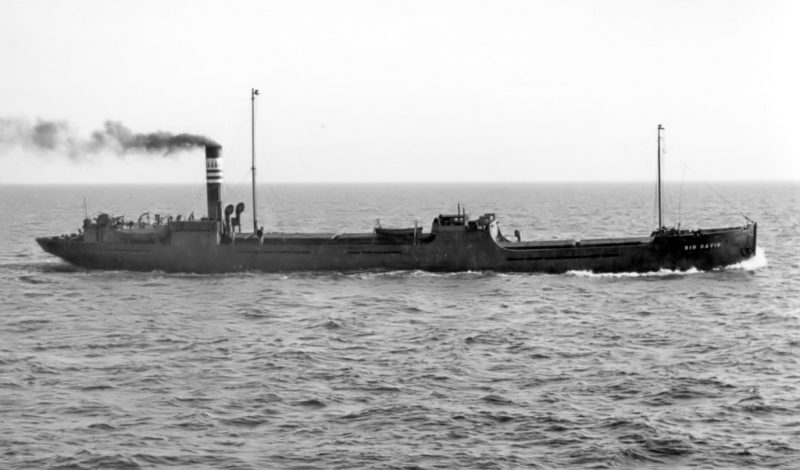
Lord Lambton, Earl of Durham, who owned a fleet of sixty steam colliers and lighters over a period of exactly one hundred years from 1853. The coal agent of Lord Lambton in 1851 proposed using steam colliers while John Bowes was still building at Jarrow, with new Lambton steam colliers loading with coal priced at five shillings per tonne, making the cargo much more competitive than the Great Northern Railway journey to London. John George Lambton was born in 1792 and when he came of age in 1813, he began the conversion of the existing Harraton Hall at Washington into Lambton Castle, seven miles distant from his many coal staiths on the south side of the Wear at Sunderland. He owned an extensive number of collieries near Lambton Castle, and ironically subsidence caused the collapse of a large part of the castle in 1855, which was rebuilt to the designs of Newcastle architect John Dobson, and is very much in business in the tourist trade today. The collieries and ships were sold in 1896 to Sir James Joicey (born in 1846), with the Tanfield Steamship Co. Ltd. set up on 27th October 1919 with a capital of £250,000 and owning fifteen steam colliers until the colliery interests of Joicey family were liquidated in 1952 following nationalisation of the coal industry, with the last colliers sold in 1953.
Colliers were chartered by the GLCC from shipowners such as the Shields Steam Shipping Co. Ltd., Pyman & Company of West Hartlepool, the General Iron Screw Collier Company founded by John Bowes and Charles Palmer in 1853 with a capital of £0.5 million and whose directors included the owners of the London Gas Company and the Commercial Gas Company, the London Steamship Co. Ltd. founded in 1860 with fifteen colliers built by the Palmer yard at Jarrow during the next eight years all with names ending in ‘a’ – Europa, Italia, Justitia, Minerva, Aurora, Aria, Venetia, Medora, Sabrina, Palmyra, Camilla, Oriana, Roxana, Statira and Miranda, and the River Steam Colliers Co. Ltd., and the big collier fleets of William Cory, Fenwick and Stephenson Clarke, the latter managing all of the colliers owned by the GLCC when they entered collier owning in 1912 for the next sixty years. All of these colliers were long term chartered to the London gas companies to ensure prompt and regular supplies of coal to the Thames.
The engines aft, bridge ‘midships GLCC downriver collier Fulgens of 2,512 grt and 3,700 dwt was the first collier in the fleet in 1912, with a black hull and brown upper works, and with a black funnel with a broad silver band above two narrow silver or white bands, with the broad silver band emblazoned with red pyramids. She was wearing on her trials from the Wood, Skinner yard at Gateshead the white houseflag with a red rising sun in the centre and ‘GLCC’ in blue capitals around the four corners of the flag. She had dimensions of overall length of 305.4 feet, moulded beam of 42.3 feet, and a moulded depth of 19.1 feet. She was powered by a triple expansion steam engine supplied by John Dickinson & Sons Ltd. of Sunderland to give a service speed of ten knots.
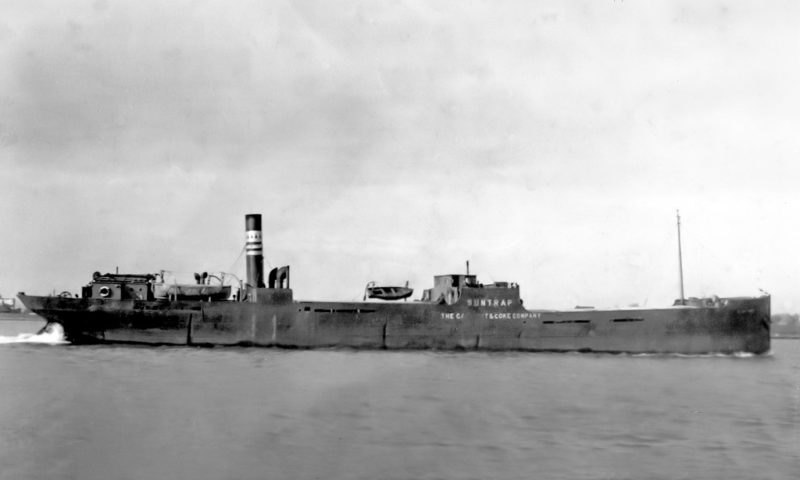
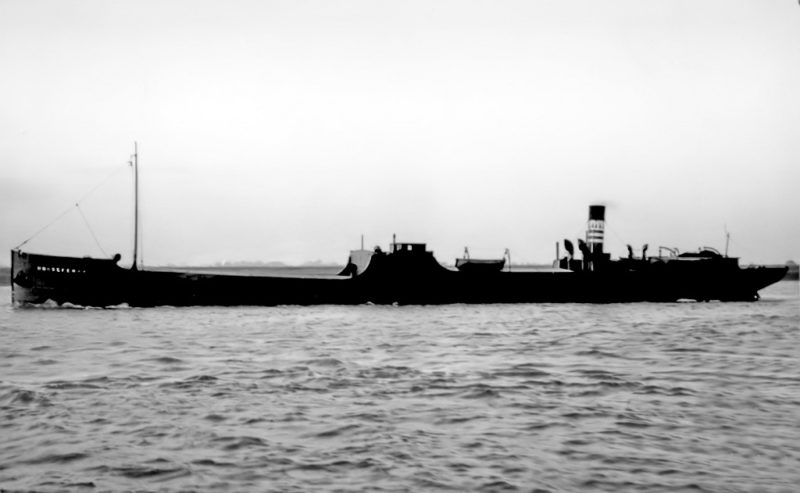
Three colliers were purchased in 1915 to serve Beckton Gas Works in Capitol, Phare and Ignis, and more followed including Battersea and the Great Laker Ignifer, Lampada, Ardens, Lanterna, Suntrap, Firelight, Glow, Lanthorn, Glint, the newbuild downriver types Flamma and her sister Lucient, Coalgas and Horseferry. Flamma was mined in 1917 only a few months after her completion and was beached at Hartlepool well down by the head, and she was thought to become a total loss. She was refloated and in order to get her back into service as quickly as possible it was easier to cut off her heavily damaged fo’c’stle and replace it with that from her sister Lucient, still under construction at the Wood Skinner yard at Gateshead at that time. The full list of eleven GLCC colliers lost during World War I is as follow :-
- Fulgens torpedoed and sunk on 1st August 1915 by UB10 three miles ESE of Haisboro’ Light vessel while on a voyage from Hartlepool to London with coal, her crew were saved.
- Ignis mined and sunk on 8th December 1915 5.5 miles NE of Aldeburgh laid by the German submarine UC7 while on a voyage from the Tyne to London with gas coal.
- Lanterna mined and sunk on 6th October 1916 2.5 miles from Cromer laid by the German submarine UC1 while on a voyage from the Tyne to London with coal.
- Firelight torpedoed and sunk on 1st May 1917 1.75 miles east of the Tyne piers by the German submarine UC29 while on a voyage from the Tyne to London with coal.
- Lanthorn captured and sunk with bombs on 22nd May 1917 3 miles east of Whitby by UB41 while on a voyage from London to the Tyne in ballast.
- Glow torpedoed and sunk on 22nd July 1917 4 miles ESE from South Cheek, Robin Hood Bay by UB21 while on a voyage from the Tyne to London with coal, 1 lost.
- Ardens torpedoed and sunk on 18th August 1917 two miles east of Filey Brigg by UC16 while on a voyage from the Tyne to London with coal, 1 lost.
- Phare torpedoed and sunk on 31st October 1917 2.5 miles from Scarborough by UB35 while on a voyage from the Tyne to London with coal, 14 lost.
- Suntrap torpedoed and sunk on 7th November 1917 2.5 miles East of South Cheek, Robin Hood Bay by UB22 while on a voyage from the Tyne to London with coal.
- Lampada torpedoed and sunk on 8th December 1917 3 miles north of Whitby by UB75 while on a voyage from the Tyne to London with coal, 5 lost.
- Coalgas mined and sunk on 5th March 1918 5 miles SW of the Shipwash Light vessel by UC4 while on a voyage from London to the Tyne in ballast
A big replacement steam collier programme was put in hand in 1919 with eighteen steam colliers built between 1919 and 1936, and managed as part of the thirty collier fleet of Stephenson Clarke in 1936. The ships supplied Beckton, Nine Elms and Fulham gas plants, and were named Halo (1919), Gaslight (1920), Jetblack (1920), Whitemantle (1920), Flashlight (1920), Afterglow (1920), Chartered (1921), Ethylene (1921), Fireglow (1925), Homefire (1925), Sir David (1927), Lady Olga (1927), Torchbearer (1929), Suntrap (1929), Horseferry (1930), Mr. Therm (1936), Icemaid (1936) and Gasfire (1936). The second-hand collier Cranford of 1,912 grt and built in 1919 by Charles Rennoldson & Company of South Shields was the only purchased collier in the inter-war years and came with the business of the Brentford Gas Company. Icemaid of 1936 was adopted as a standard design for a class of 26 colliers built during World War II. Many of these chartered colliers brought gas coal to Beckton Gas Works, but none were owned by the post- war fleet of the NTGB or SEGB.
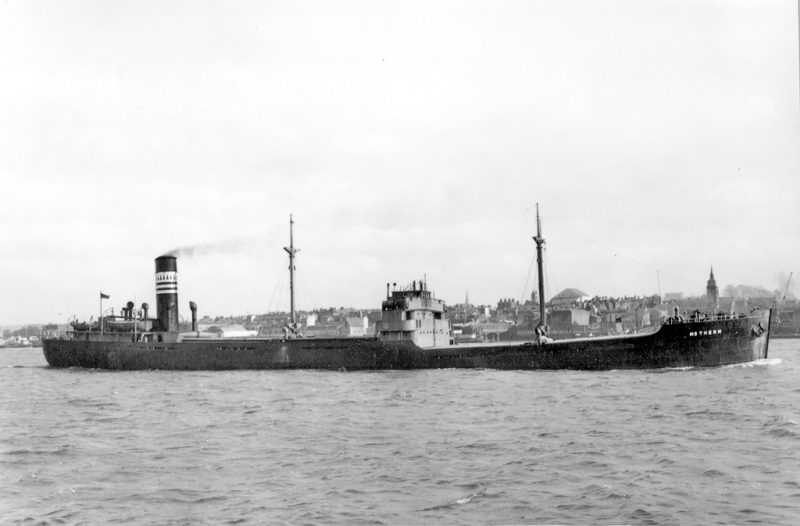
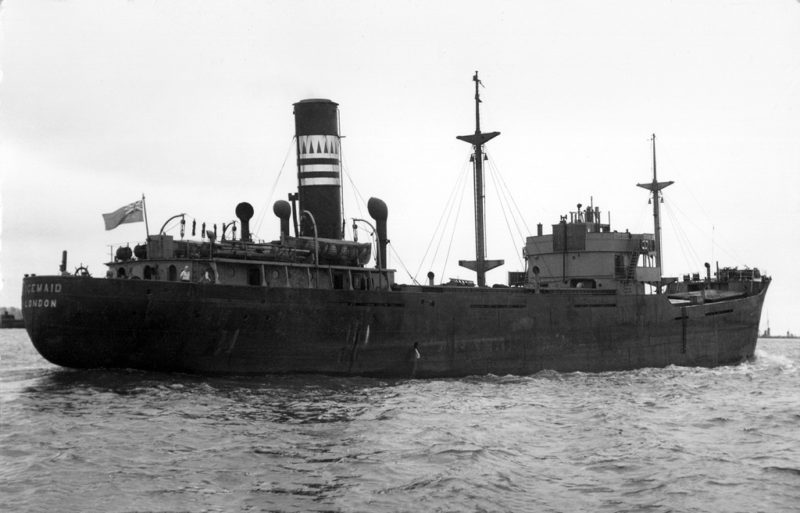
Several colliers loaded every day with gas coal on the staiths of the Tyne and the Wear from the fleet of Stephenson, Clarke and the managed GLCC, including six that loaded on 31st October 1938 in Brasted, Keynes, Whitemantle, Wimbledon, Matching and Icemaid. The GLCC had a big fleet of colliers at the beginning of the war in September 1939, and three months later the downriver type Chartered was requisitioned by the Admiralty for service as a Mine Destructor Ship until she was badly damaged in a collision with an American destroyer near Swansea on 18th October 1943. Although taken to a repair yard, she did not re-enter service and she was broken up at Briton Ferry in 1945. A number of ships suffered severe damage when detonating mines or from bombing, but survived to be rebuilt in North East Coast shipyards, including Gasfire, Firelight and Ethylene. Mr. Therm was extensively modified at Blyth in the Spring of 1944 to allow vehicles to be unloaded from her bows while beached at the Normandy beachhead together with 120 Canadian commandos. She survived the war and was put back into service as a collier until broken up in April 1959 at Dunston on Tyne. Eleven ships became total losses during the war, as follows:-
- Whitemantle was mined and sunk on 22nd October 1939 five to six miles off Withernsea while on a voyage from the Tyne to London with coal, 14 crew lost.
- Torchbearer was mined and sunk on 18th November 1939 two miles off the Shipwash Light vessel near Harwich, four crew lost while on a voyage from Seaham Harbour to London with coal.
- Flashlight bombed and sunk to East of Spurn Point on the Humber on 7th March 1941 while on a voyage from Seaham Harbour to London with coal, her crew of 16 were saved.
- Murdoch lost within days of delivery when she struck a submerged wreck on 26th April 1941 and grounded on the Scroby Sands while on a voyage from Sunderland to London with coal.
- Gasfire mined and sunk on 21st June 1941 around ten miles east of Southwold in Suffolk while on a voyage from London to Sunderland in ballast, her crew of 28 were saved.
- Adams Beck lost only two months after delivery on 29th July 1941 when bombed shortly after leaving the Tyne with 4,181 tonnes of coal for London, sank with the loss of one crew member at 1230 hours on the following day, her wreck lies one mile from the 20C buoy.
- Homefire bombed and sunk off Cromer on 1st July 1941 while on a voyage from London to Sunderland in ballast, 15 of her crew of 17 were lost.
- Fireglow mined and sunk in the Thames Estuary on 8th December 1941 while on a voyage from London to the Tyne in ballast, 1 member of her crew of 20 was lost.
- Horseferry torpedoed and sunk by E-boat on 11th March 1942 while on a voyage from the Tyne to London with 1,300 tonnes of coal, 9 crew and 2 gunners lost.
- Halo was torpedoed and sunk on 22nd January 1945 off Flushing by an E-boat while on a voyage from the Normandy Beaches to Antwerp with a cargo of Government stores, coal and railway sleepers, and sank early the next day and her crew were saved. She had also been on the bottom of the Thames near Beckton gas works after arriving from the Tyne with coal when she was mined with four crew killed on 21st March 1941, but was raised and put back into service.
- Gasray torpedoed and sunk by U978 near St. Abbs Head while on a voyage from Grangemouth to Blyth in ballast, six crew and two gunners were lost.
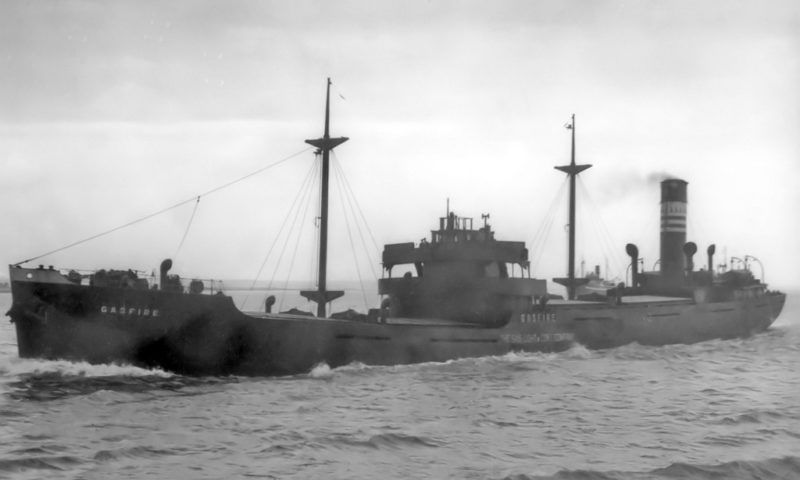
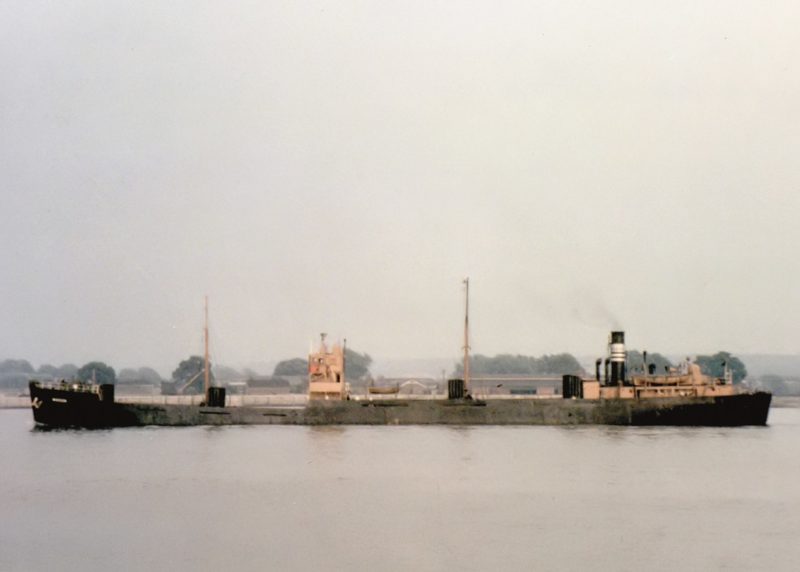
NORTH THAMES GAS BOARD (NTGB)
On 1st May 1949, the Gas, Light & Coke Company (GLCC) was nationalised under the Gas Act of 1948 and the fleet of colliers became the major part of the new North Thames Gas Board (NTGB), one of a dozen regional Gas Boards throughout the U.K. The GLCC had 21,250 employees, who transferred with their pension rights to the NTGB, and they continued to sell a huge amount of around 276.7 million therms of gas per year across the London boroughs.
The benefits of having just one organisation for the generation and supply of essential gas services had long been accepted since the first use of gaslight in the 1820s for public street lighting, and the proliferation of many private gas companies from that date. The GLCC fleet of twenty colliers on vesting day continued to be managed by Stephenson Clarke after the fleet was transferred to the NTGB with the same funnel colours and houseflag, except the capital letters ‘N’, ‘T’, ‘G’ and ‘B’ were in the four corners of the flag. The twenty colliers were:-
- Adams Beck 1,773grt of 1949
- Afterglow 936grt of 1920
- Capitol 1,558grt of 1941
- Ethylene 936grt of 1921
- Firebeam 1,554grt of 1945
- Firedog 1,557grt of 1942
- Fireglow 1,549grt of 1944
- Fireguard 2,015grt of 1943
- Firelight 2,841grt of 1943
- Fireside 2,757grt of 1942
- Flamma 2,727grt of 1942
- Gaslight 1,696grt of 1920
- Icemaid 1,964grt of 1936
- Jetblack 1,560grt of 1920
- Lady Olga 1,266grt of 1927
- Mr. Therm 2,974grt of 1936
- Stelling 2,126grt of 1924
- Sir David 1,275grt of 1927
- Suntrap 939grt of 1929
- Winsor 2,831grt of 1942
Lucient of 1918 had been sold in 1946 to Comben Longstaff & Co. Ltd. and renamed Monmouthbrook and gave another ten years of service in the coal trade until she arrived at the breaking up yard at Grays of T. W. Ward Ltd. on 3rd April 1956. Adams Beck was the only motorship in this fleet on vesting day, as she had been delivered pre – nationalisation as the lead ship of a class of seven motor ‘upriver’ flat-irons, her sisters being Murdoch, Samuel Clegg, Thomas Hardie, Accum, Falconer Birks and Thomas Livesey, with all serving Nine Elms gas works near Battersea Power Station. A class of five big ‘downriver’ types of 4,575 dwt was delivered to the NTGB in 1954/55 as Frederick John Evans, Sir David II, David Pollock, John Orwell Phillips and Thomas Goulden from Sunderland and Aberdeen yards to serve the Beckton gas works.
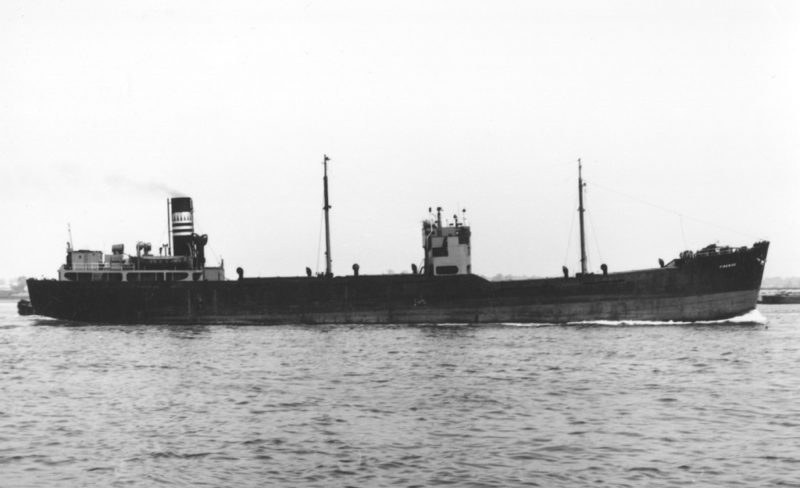
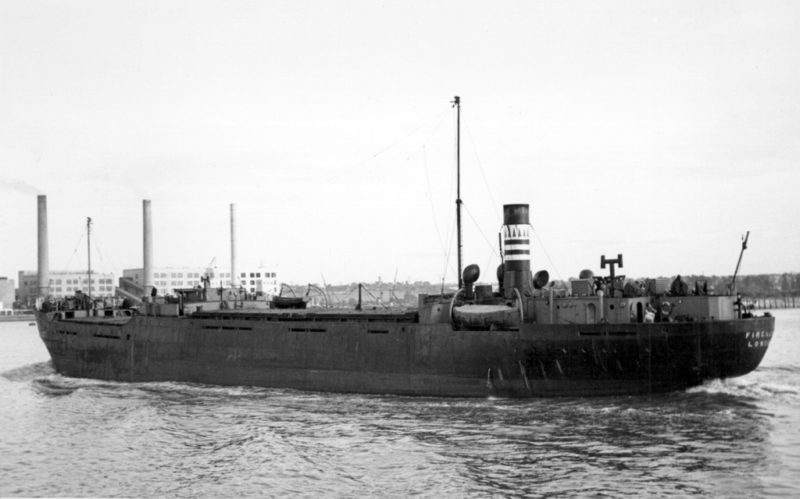
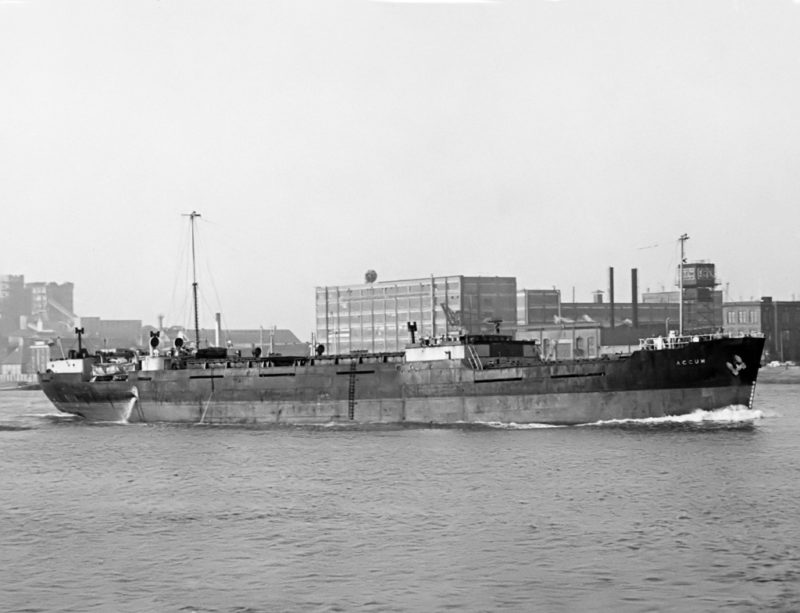
The sale of the war-built ‘downriver’ types and ‘upriver’ types at the end of their working lives, plus the advent of massive amounts of North Sea gas coming on-stream from offshore East Anglia meant that by 1966 only seven ‘upriver’ flat irons and five steam-propelled ‘downriver’ types were left in the fleet. Consequently, the fleets of the NTGB in 1959 and 1966 as shown below were in a steady decline:-
1959 1966
Adams Beck Adams Beck
Capitol David Pollock
David Pollock Falconer Birks
Falconer Birks Firebeam
Firebeam Frederick John Evans
Firedog John Orwell Phillips
Fireglow Murdoch
Firelight Samuel Clegg
Fireside Sir David II
Flamma Thomas Goulden
Frederick John Evans Thomas Hardie
John Orwell Phillips Thomas Livesey

Mr. Therm
Murdoch
Samuel Clegg
Sir David II
Thomas Goulden
Thomas Hardie
Thomas Livesey
Winsor
Falconer Birks was the last collier in the NTGB fleet when she arrived at Nine Elms gas plant at Battersea in January 1970 with the last cargo of coal. She, as with the rest of the fleet, was sold for further service and went on to have long subsequent careers under many names and flags. Nearly all of the bigger ‘downriver’ types found their way into the Italian fleet of Senor Gino Gardella of Genoa for trading along the Italian coasts with names with a ‘Brick’ prefix, and four of this class of five were scrapped in Italy during 1984. The fifth ship was the former John Orwell Phillips which became in 1968 Agios Fanourios under the Greek flag, and was then seriously damaged in a collision in the Fehmarn Belt in Denmark on 16th April 1971, and was sent for breaking up four months later at Sarpsborg. There are no upriver ‘flat-iron’ or downriver types of the NTGB left in service today.
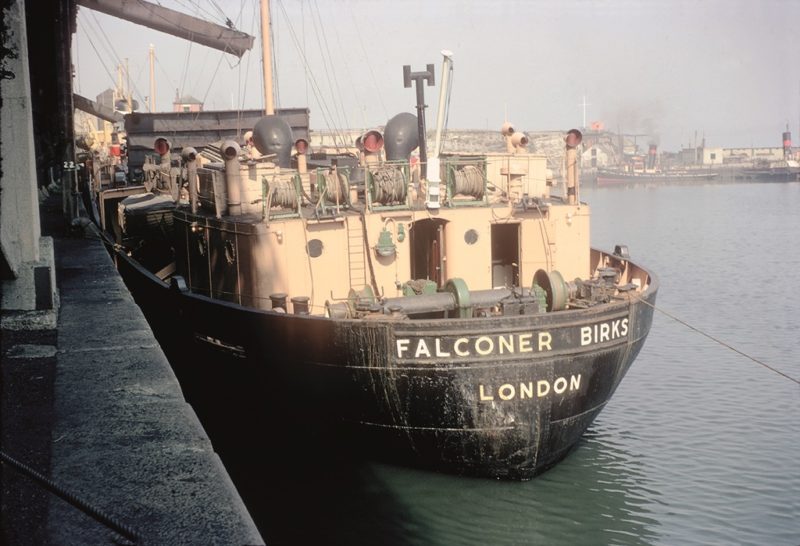
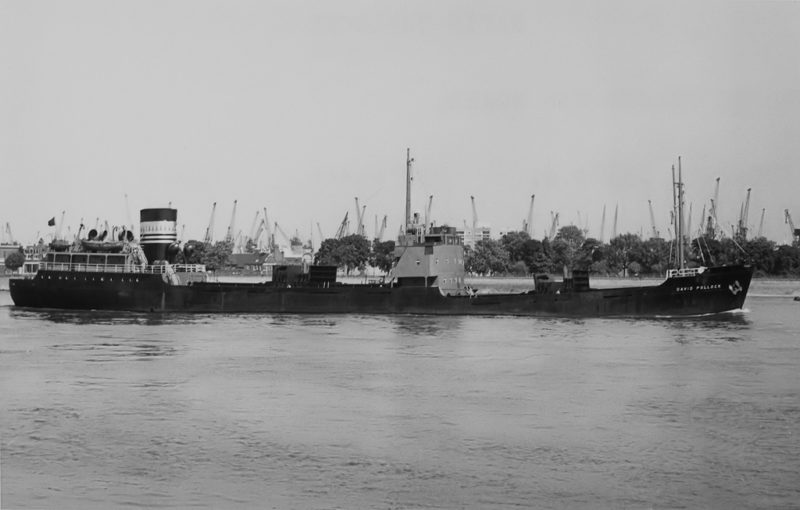

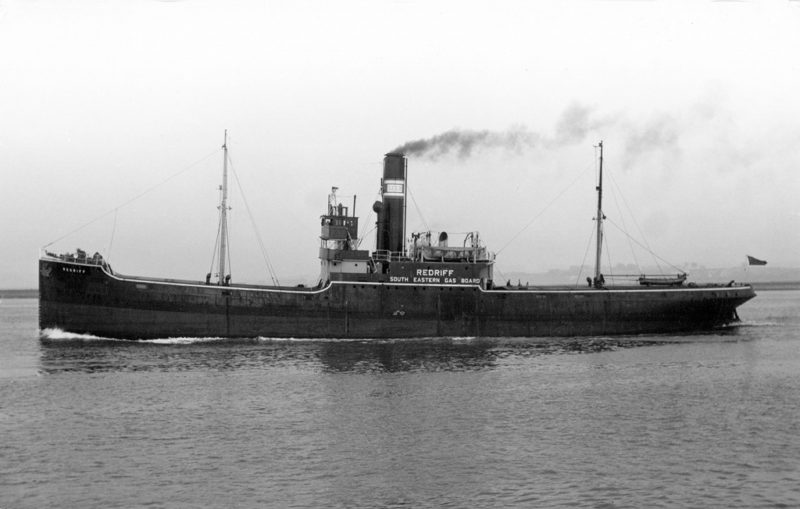
Another constituent of the NTGB was the Commercial Gas Company, which sold its last collier, Stepney in 1944, and it too became part of the nationalised U.K. gas industry in 1949. The company served much of East London between 1839 and 1949, and the company colliers that were built for the company, with the exception of the first one named Commercial, were named after the London boroughs it served, Poplar, Limehouse, Bow, Bromley, Mile End, and Stepney. The company was founded in 1837 and began the manufacture of coal gas in 1839 in Stepney and absorbed the Poplar Gas & Light Company (1850), the British Gas & Light Company (1852), the West Ham Gas Company (1855), and the Ratcliffe Gas, Light & Coke Company (1876). By 1949, the area of supply of the Commercial Gas Company was seven square miles in Poplar, Stepney and parts of Bethnall Green and Essex, but the ten colliers owned by the company were small and ranged in size from only 565 grt to 865 grt. The North Thames Gas Board was dissolved on 31st December 1972 when the North Thames area became a region of the British Gas Corporation under the Gas Act of 1972. It had supplied the North London area, and parts of Berkshire, Buckinghamshire, Essex, Hertfordshire, Middlesex and Surrey.
SOUTH EASTERN GAS BOARD
The South Eastern Gas Board (SEGB) supplied coal gas to the administrative areas of South London, parts of Surrey and Sussex, and the whole of Kent after nationalisation of the gas industry in 1949. There were two constituent gas companies of the SEGB of London gas companies that owned colliers in the Wandsworth & District Gas Company (1931-1949), and the South Metropolitan Gas Company (1915-1949). On nationalisation of the U.K. gas industry under the Gas Act, both of the latter two gas companies each contributed six colliers to the newly nationalised South Eastern Gas Board (SEGB).
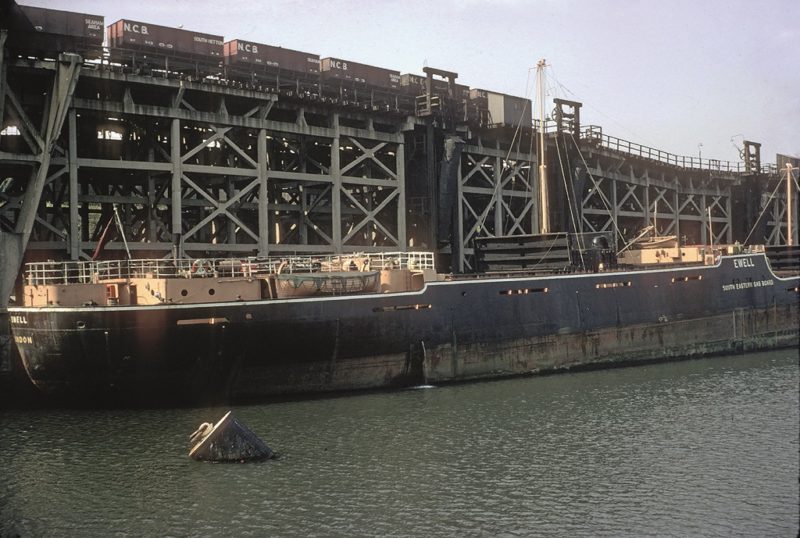
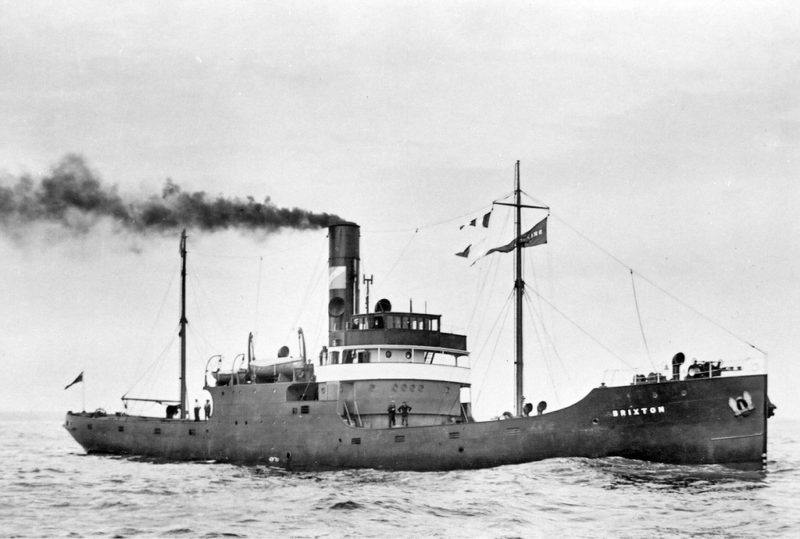
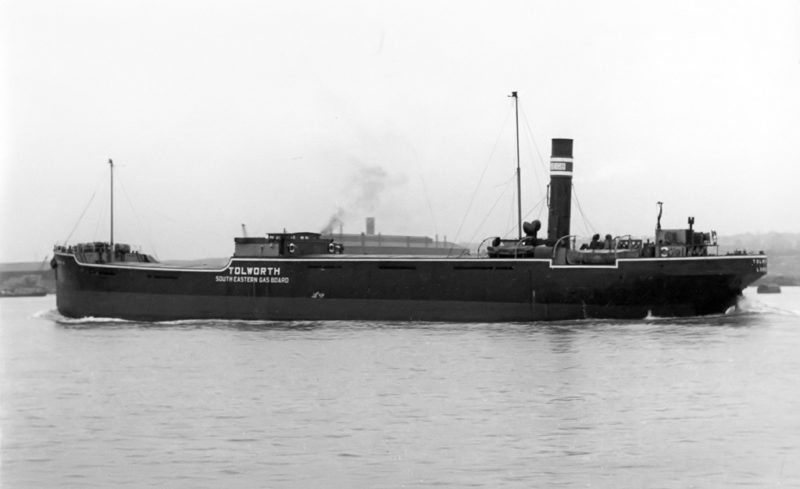
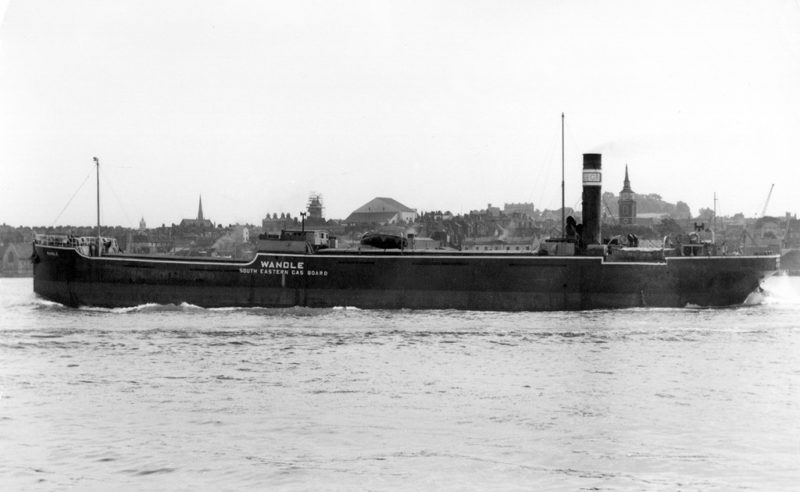
The Wandsworth & District Gas Company was set up in 1834 by a group of Wandsworth and Putney investors on 27th October 1834, and was fortunate in that two of its Chief Engineers were very able and later became well-known in the gas production industry. The first Chief Engineer was John Bryan, and then from 1863 the distinguished Chief Engineer Henry Edward Jones, who served the company as engineer, director and from 1903 as Chairman. The Wandsworth gas works was built in 1834 on the Surrey bank of the Thames near Wandsworth Bridge to supply Wandsworth, Putney and part of Battersea. The company took over several other London and district gas suppliers:-
- Mitcham and Wimbledon District Gas Light Company
- Epsom and Ewell Gas Company
- Kingston upon Thames Gas Company
- Sutton Gas Company
- Leatherhead Gas & Lighting Company
- Walton upon Thames and Weybridge Gas Company
The company began to own colliers in 1906, and the problem of handling large quantities of coal by barge via a canal basin was solved by the second-hand collier Ratcliff purchased that year to deliver 1,100 tonnes of coal to the gas works at Wandsworth. The company lost the colliers Wandle, named after the river that enters the Thames at Wandsworth, and Lightfoot to enemy action during World War I. Wandle was replaced by Wandle (2) in 1923 but she was sold to Stephenson Clarke Ltd. in 1932 and renamed Pitwines. The company styled itself as the Wandsworth & District Gas Company in 1931, and shortly afterwards it owned the following four upriver flat-iron colliers and a barge:-
Ewell (2) of 2,000 dwt built in 1926
Tolworth of 2,000 dwt built in 1930
Wandle (3) of 2,220 dwt built in 1932
Woodcote of 1,725 dwt built in 1924 but sold in 1934
The barge Kingston Coal was brought to London in many ‘flat-irons’ in order to fit under the Thames bridges upriver from the Pool of London to Wandsworth, and was then unloaded by cranes on pontoons beside the gasworks. The Wandsworth & District Gas Company had offices in Fairfield Street in Wandsworth, and the company owned colliers had black hulls with brown upper works, and their funnels were black with a broad white band edged with a narrow red band above and below, and the broad white band was emblazoned with the initials ‘W&D GAS CO’.
The flat iron collier Wimbledon was added to this fleet in 1937, and the fleet bravely sailed during World War II against an onslaught of torpedoes and bombs in East Coast convoys. Wandle was torpedoed by an E-boat on 9th November 1942 off Lowestoft, almost completely blowing off her bows. One of her gunners was killed but she somehow managed to stay afloat and was beached at Yarmouth. She was then towed to South Shields and dry-docked, and fitted with a new bow and was ready for service again on 8th April 1943. All of the fleet survived the war, and together with the new flat-irons Chessington and Mitcham, built in 1946, six colliers passed into SEGB ownership in 1949. Wimbledon foundered four miles off Blakeney in Norfolk on 31st October 1956 after sea water had broken through her hatch covers while on a voyage from Sunderland to London with gas coal with the loss of her Master.
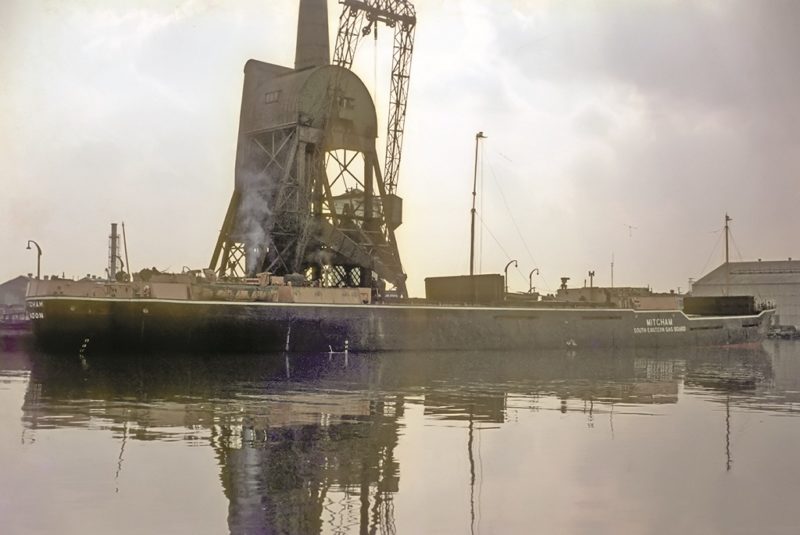
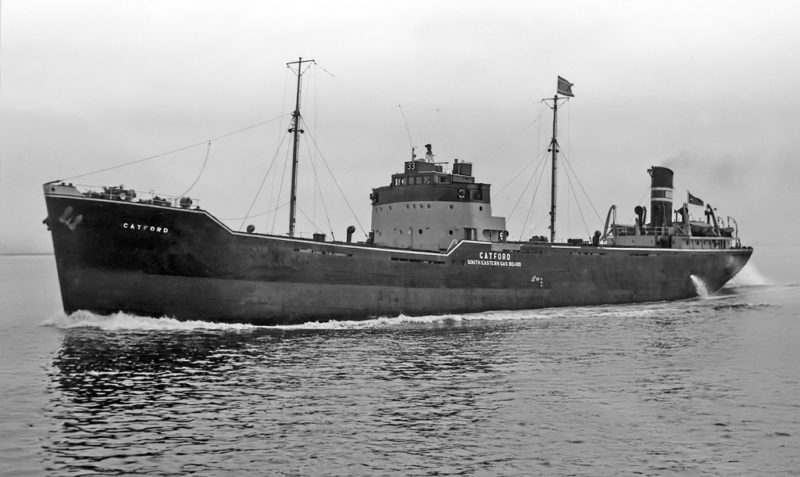
Wandsworth & District Gas Company and sixty other businesses had passed to the nationalised SEGB on 1st May 1949. The company at that time supplied gas to an area of 160 square miles, had 225,000 customers and used over half a million tonnes of coal per year in gas generation. Wandsworth gas works was upstream of Battersea Power Station, and both were supplied with coal by flat-iron colliers able to pass under seventeen bridges from the Tower of London. Rationalisation of gas manufacturing plant enabled works of amalgamated companies to be closed down within ten years of nationalisation. Production of gas at Wandsworth ceased one month after the last cargo arrived in the collier Croydon in 1971, after a magnificent 135 years of gas manufacture.
The South Metropolitan Gas Company was formed in 1829 as the South Metropolitan Gas Light & Coke Company with the first gas works completed in 1833. The much bigger East Greenwich gas works was built between 1881 and 1886, and stretched for around two kilometres from Blackwall Point towards New Charlton and covered 240 acres. The size of the two gasholders were enormous at 8.6 million cubic feet for the first, and 12.2 million cubic feet for the second. These gasholders were only recently demolished as late as 2020. The gas works took over the works of Frank Hills at Phoenix Wharf, which already used tar and ammonia from existing gas works on the site, and was using around one million tonnes of gas coal per year by the turn of the century. The East Greenwich gas works was the last London gas works to be built and the most modern and served 52 square miles of South East London. The works was adapted to burn oil in the 1960s and produced 400 million cubic feet of gas in 1965, the largest for a single site in the world. Gas production ceased in 1976 after North Sea gas had taken over, and East Greenwich gas works was mothballed and eventually demolished. The Millennium Exhibition Centre and the Millennium Village were built on the site of the gas works.
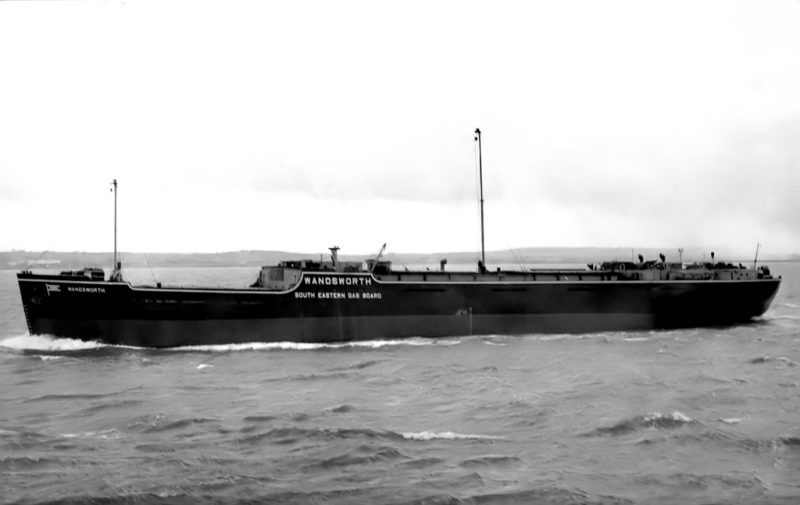
The South Metropolitan Gas Company had offices in the Old Kent Road, and preferred to charter colliers, but were forced into collier owning at the start of World War I and the shortage of colliers due to requisition. A fleet of second-hand colliers was owned in 1915, with ten colliers lost to enemy action and marine causes during World War I. They had interesting names such as Quaggy, Amsteldam, Togston, Dulwich, Ravens-bourne, Ramsgarth, Pontypridd, Swansea Vale, Kennington and Giralda. The fleet was rebuilt, with Brixton sold in 1927 and Redriff sold in 1924, and by 1932 comprised seven colliers and the barge George Livesey. These engine ‘midships colliers were named:-
- Brixton (2) built in 1927
- Brockley built in 1920
- Camberwell built in 1924
- Catford built in 1919
- Effra built in 1910
- Old Charlton built in 1919
- Redriff (2) built in 1925
Four of this fleet of ‘downriver’ types became war losses during World War II as follows:-
Brixton was mined and sunk on 15th August 1940 off Orford Ness while on a voyage from Sunderland to London with gas coal, her crew of 20 were saved.
Old Charlton was bombed and sunk on 27th February 1941 off Felixstowe while on a voyage from Hartlepool to London with gas coal, one member of her crew of 23 was lost.
Effra was torpedoed and sunk by an E- boat on 17th April 1941 near the Cross Sand Light vessel while on a voyage from the Tyne to London, 2 of her crew of 30 were lost.
Catford was mined and sunk on 31st May 1943 to the East of Spurn Point while on a voyage from London to the Tyne in ballast, four members of her crew of 19 and all 5 gunners were lost.
The new ‘downriver’ steam collier Effra (2) and motor collier Catford (2) of 2,700 grt and 4,200 dwt were completed by the famous collier building yard of S. P. Austin & Son Ltd. at Sunderland in January 1946 and August 1948, as well as the flat-iron Brixton from the same yard in July 1946. Thus, six colliers passed into the ownership of the SEGB from the South Metropolitan Gas Company in 1949 in Brockley of 1920, Camberwell of 1924, Redriff of 1925, Effra of 1946, Brixton of 1946, and Catford of 1948. The practice of using bold lettering ‘midships on the hulls of all colliers by the SEGB for the name of the collier together with name of the utility greatly helped with their arrival in the Thames, together with their collier numbers displayed on the navigating bridge.
The SEGB built nine new diesel powered ‘flat-iron’ colliers between 1950 and 1958 as Wandsworth, Sydenham, Croydon, Guildford, Kingston, Dulwich, Ewell, Lambeth and Camberwell, as well as one ‘downriver’ type motor vessel Southwark of 3,065 grt and 4,450 dwt from the Sunderland yard of Austin & Pickersgill Ltd. in February 1958 to serve East Greenwich gas works. Guildford was beached on 10th March 1954 at the mouth of the Tees in a sinking condition after a collision with the steam tramp Temple Bar off Whitby, but salvage attempts were abandoned two months later. However, North Sea gas production from gas rigs in offshore East Anglia brought a premature end to this fine fleet of colliers between 1967 and 1971. The funnel colours of black with a broad red band between two narrow white bands with a white panel on the red band with ‘SEGB’ in blue lettering and the similar houseflag disappeared forever. The only post-war big ‘downriver’ collier Southwark, built in 1958, was sold to Greek Cypriot owners in 1968 and renamed Saint Andrea. The SEGB became part of the East Surrey area of the British Gas Corporation in 1971.
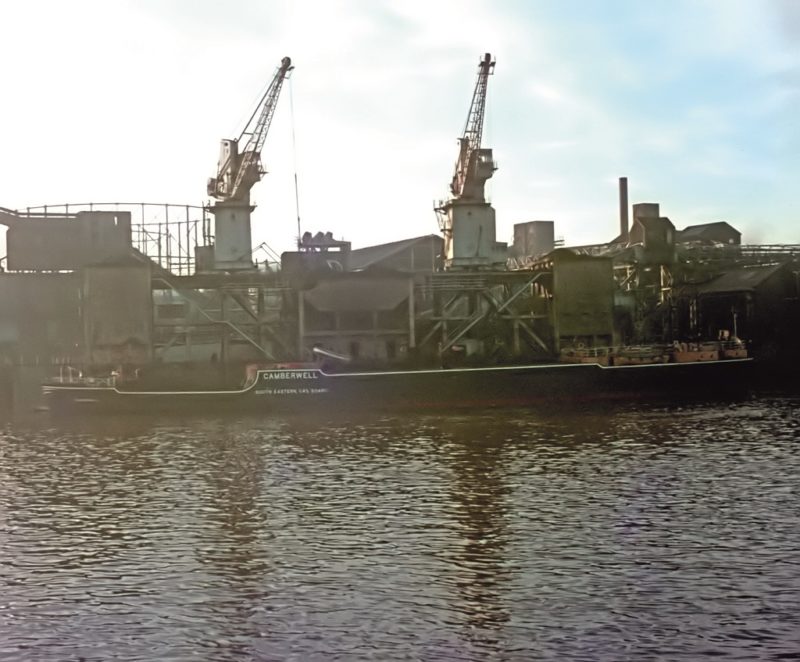
SUMMARY
The vast fleet of chartered and owned steam and motor colliers that supplied the gas works of North and South London and other parts of South East England had existed for 120 years between 1851 and 1971. The ‘flat-iron’ colliers Kingston, Sydenham and Croydon were the last of the SEGB fleet to be sold in 1971, and several of these upriver types gave up to ten more years of service to the collier fleet of Stephenson Clarke Ltd., their previous managers. Most went on to give long subsequent further service to foreign owners, with Croydon, built in 1951, having an almost forty year career when she went to the breakers yard at the end of 1999. Thus, the nationalised gas collier fleets of the NTGB and the SEGB had a relatively brief existence of only twenty two years, but their passing lives longer in the memory.
Coal gas generation had thus ended in 1971, with ‘cleaner’ North Sea gas from both the British and Norwegian sectors of the North Sea The last coal loading berth on the Tyne, the Tyne Coal Terminal at Jarrow Slake, sent its last cargo of coal to the Thames on 20th March 1998 after only twelve years of operation, but the conveyor belts were in use a year later for the export of grain and limestone. The last coal staith at Blyth, Bates Staith, was demolished in June 2014, and thus there are no coal loading staiths left on the North East Coast. The British coal industry continued to supply power stations, with two of the last three surviving collieries closed in July 2015 in Hatfield in Yorkshire and Thoresby in Nottingham, and the very last deep coal was mined on the last day of operation of Kellingley Colliery near Selby on 18th December 2015. Small quantities of open cast coal continue to be mined today.
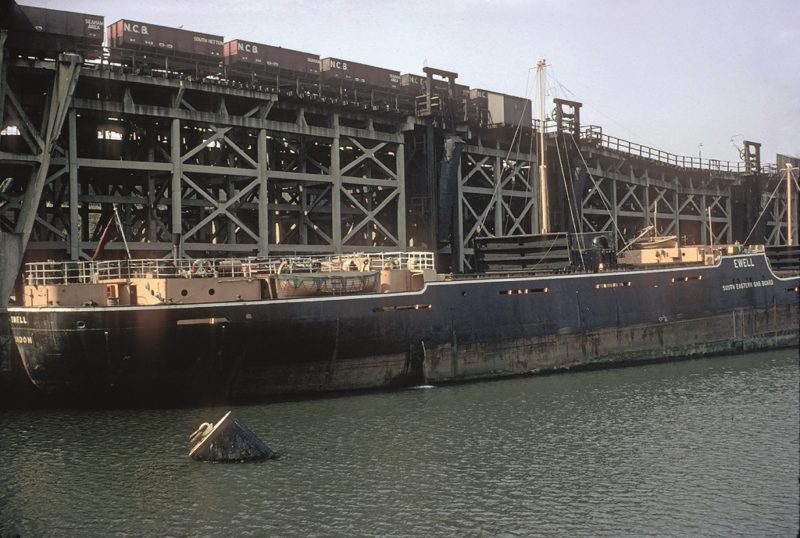

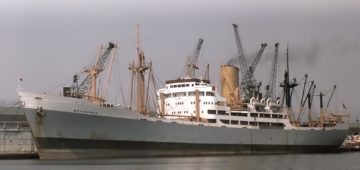



Comments
Sorry, comments are closed for this item